Understanding the Importance of Self-Assessment
Self-assessment is a cornerstone of skill improvement in sports training. It allows athletes to identify their strengths and weaknesses, paving the way for targeted performance enhancement. By regularly evaluating your skills, you can make informed decisions about your training regimen and athletic gear, including the use of rash guards.
Rash guards for athletes are more than just protective clothing. They play a crucial role in sports self-assessment by providing comfort and flexibility, allowing you to focus on your performance without distractions. The benefits of rash guards extend beyond protection; they help maintain optimal body temperature and reduce muscle fatigue, which are essential for accurate skill evaluation.
Incorporating self-assessment techniques into your routine can significantly boost your skill improvement journey. Whether you're a beginner or a seasoned athlete, understanding your current capabilities is the first step towards setting clear and achievable goals. With the right training tips and athletic gear, you can elevate your game and achieve new heights in your sports training.
Setting Clear and Achievable Goals
Setting clear and achievable goals is a cornerstone of effective self-assessment techniques. When you define your objectives, you create a roadmap for skill improvement and performance enhancement. Start by identifying specific areas where you want to see progress. Whether it's mastering a new technique or improving endurance, having a clear target helps you stay focused.
Incorporating rash guards into your sports training can significantly aid in this process. Rash guards for athletes are not just about protection; they symbolize commitment and readiness to push boundaries. Wearing the right athletic gear can boost your confidence and performance, making your training sessions more productive.
Break down your goals into smaller, manageable tasks. This approach makes it easier to track progress and make necessary adjustments. For instance, if your goal is to enhance your agility, set weekly targets for specific drills. Regularly evaluate your performance to ensure you're on the right track.
Remember, the key to successful goal-setting is to be realistic. Ambitious goals are great, but they should be attainable. Unrealistic targets can lead to frustration and hinder your progress. Use sports self-assessment to gauge your current skill level and set goals that challenge you without being overwhelming.
By setting clear and achievable goals, you lay a strong foundation for continuous improvement. This structured approach not only enhances your skills but also makes your training more enjoyable and rewarding.
Techniques for Effective Self-Assessment
Embarking on the journey of self-assessment is crucial for any athlete aiming for skill improvement. The first step involves understanding the various self-assessment techniques available. These methods are designed to provide a clear picture of your current abilities and areas that need enhancement.
One effective technique is the use of performance metrics. By tracking your progress over time, you can identify patterns and pinpoint specific skills that require attention. This method is particularly useful in sports training, where consistent monitoring can lead to significant performance enhancement.
Another valuable technique is video analysis. Recording your training sessions allows you to review your performance critically. This visual feedback is instrumental in identifying both strengths and weaknesses. It also helps in understanding the benefits of athletic gear, such as rash guards, which can improve your comfort and performance during training.
Peer feedback is also an essential component of self-assessment. Engaging with fellow athletes and coaches provides an external perspective on your skills. This feedback can be invaluable in highlighting areas you might have overlooked. Additionally, it fosters a supportive environment where everyone is committed to mutual improvement.
Lastly, self-reflection is a powerful tool. Taking the time to evaluate your performance mentally can lead to profound insights. This introspective approach complements other self-assessment techniques, providing a holistic view of your abilities.
Incorporating these self-assessment techniques into your routine will undoubtedly lead to skill improvement. As you progress, remember the importance of using the right athletic gear, such as rash guards, to enhance your training experience.
The Role of Rash Guards in Training
Rash guards have become an essential piece of athletic gear in modern sports training. These versatile garments offer numerous benefits that can significantly enhance your performance. When engaging in self-assessment techniques, wearing a rash guard can provide you with the comfort and protection needed to focus entirely on skill improvement.
One of the primary rash guard benefits is its ability to regulate body temperature. This feature ensures that athletes remain cool and dry, even during intense training sessions. By maintaining optimal body temperature, you can concentrate better on your skill evaluation and sports self-assessment without the distraction of discomfort.
Additionally, rash guards for athletes offer excellent protection against skin abrasions and injuries. This is particularly important during rigorous sports training, where the risk of skin damage is high. The protective layer provided by rash guards allows you to push your limits safely, facilitating performance enhancement and skill improvement.
Moreover, the compression aspect of rash guards aids in muscle support and recovery. This can be incredibly beneficial when practicing self-assessment techniques, as it helps reduce muscle fatigue and soreness. By incorporating rash guards into your training tips, you can ensure that your body remains in peak condition, ready to tackle any challenges that come your way.
Incorporating Feedback from Coaches and Peers
Incorporating feedback from coaches and peers is a crucial step in the self-assessment process. This feedback provides an external perspective on your performance, highlighting areas for skill improvement that you might overlook. Engaging with coaches and peers allows you to gain insights into your strengths and weaknesses, which is essential for effective sports self-assessment.
When you receive feedback, it's important to approach it with an open mind. Constructive criticism can be a powerful tool for performance enhancement. By understanding the specific areas where you need to improve, you can tailor your sports training to address these gaps. This targeted approach ensures that your efforts are focused on the most impactful areas, leading to more significant skill improvement.
Rash guards for athletes play a supportive role in this process. As you incorporate feedback and adjust your training regimen, the benefits of wearing rash guards become evident. They provide comfort and protection, allowing you to train harder and longer without the risk of skin irritation or injury. This means you can focus entirely on your skill evaluation and performance enhancement without distractions.
Additionally, discussing feedback with your peers can lead to valuable training tips. Sharing experiences and strategies can help you discover new techniques and approaches that you might not have considered. This collaborative environment fosters continuous improvement and keeps you motivated to push your limits.
Tracking Progress and Adjusting Goals
Tracking your progress is essential for effective self-assessment and skill improvement. Begin by setting clear, achievable goals. These goals should be specific, measurable, and time-bound. As you work towards these objectives, regularly monitor your performance. This will help you identify areas where you excel and aspects that need more attention.
Using a journal or digital app can be beneficial for tracking your progress. Document your training sessions, noting down key metrics and observations. This practice not only keeps you organized but also provides a tangible record of your development over time. Reviewing this data periodically allows you to see patterns and trends in your performance.
Adjusting your goals based on your progress is crucial. If you find that you are consistently meeting your targets, it may be time to set more challenging objectives. Conversely, if you are struggling to achieve your goals, consider breaking them down into smaller, more manageable steps. This approach ensures that your self-assessment techniques remain dynamic and responsive to your evolving skill level.
Incorporating rash guards into your training can further enhance your performance. These athletic gear items offer numerous benefits, such as improved comfort and protection. By wearing rash guards, you can focus more on your training and less on potential distractions or injuries. This allows for a more accurate self-assessment and better skill evaluation.
Remember, the key to effective self-assessment is consistency. Regularly tracking your progress and adjusting your goals will lead to continuous improvement. Embrace the process and watch as your skills and performance reach new heights.
Utilizing Technology for Self-Assessment
In the modern era of sports training, technology has become an indispensable tool for self-assessment techniques. Utilizing technology for self-assessment can significantly enhance skill improvement and performance enhancement. Various apps and devices are designed to help athletes track their progress, analyze their performance, and identify areas for improvement.
Wearable technology, such as smartwatches and fitness trackers, can monitor vital statistics and provide real-time feedback. These devices can be particularly beneficial when paired with athletic gear like rash guards, which offer additional benefits such as protection and comfort during intense training sessions. Rash guards for athletes are not just about protection; they also play a role in maintaining optimal body temperature and reducing muscle fatigue.
Video analysis is another powerful tool for sports self-assessment. Recording your training sessions allows you to review your techniques and identify mistakes that might not be apparent in real-time. This method of skill evaluation can be incredibly insightful, offering a visual representation of your progress and areas that need attention.
Mobile apps designed for sports training can also provide structured training tips and routines tailored to your specific needs. These apps often include features for setting goals, tracking progress, and receiving feedback, making them an excellent addition to your self-assessment toolkit.
By integrating these technological tools into your training routine, you can gain a comprehensive understanding of your performance. This approach not only aids in skill improvement but also ensures that you are making the most of your athletic gear, including the versatile rash guards.
Creating a Balanced Training Routine
Creating a balanced training routine is essential for effective self-assessment and skill improvement. A well-rounded approach ensures that all aspects of your performance are evaluated and enhanced. Start by incorporating a mix of strength training, cardiovascular exercises, and flexibility workouts. This variety not only keeps your routine engaging but also targets different muscle groups and skills.
When planning your training sessions, consider the benefits of athletic gear like rash guards. These garments are designed to provide comfort and protection, allowing you to focus on your performance without distractions. Rash guards for athletes are particularly beneficial during intense sports training, as they help regulate body temperature and prevent skin irritation.
To maximize performance enhancement, integrate specific training tips into your routine. For instance, set clear, achievable goals for each session. This practice aids in skill evaluation and helps track progress over time. Additionally, regularly update your training plan based on your self-assessment techniques. This dynamic approach ensures continuous improvement and keeps you motivated.
Remember, a balanced training routine is not just about physical exercises. Mental preparation and recovery are equally important. Incorporate mindfulness practices and adequate rest periods to maintain overall well-being. By creating a comprehensive training plan, you can effectively utilize sports self-assessment to elevate your game and achieve your athletic goals.
The Evolution of Rash Guards in Sports
The evolution of rash guards in sports has been nothing short of revolutionary. Initially designed for water sports, these versatile pieces of athletic gear have found their way into various sports training routines. The benefits of rash guards extend beyond mere protection; they play a crucial role in performance enhancement and skill improvement.
Rash guards for athletes are engineered to provide optimal comfort and flexibility. This allows for a full range of motion during intense training sessions. The advanced materials used in modern rash guards wick away moisture, keeping athletes dry and focused. This is particularly beneficial during self-assessment techniques, where maintaining peak performance is essential.
Incorporating rash guards into your sports self-assessment routine can offer significant advantages. They help in reducing muscle fatigue and preventing injuries, which are critical for continuous skill evaluation and improvement. As you engage in various training tips and exercises, the right athletic gear can make a substantial difference in your overall performance.
Understanding the evolution of rash guards helps appreciate their importance in today's sports training landscape. These garments have transformed from simple protective wear to essential tools for performance enhancement. By integrating rash guards into your training, you not only protect yourself but also pave the way for consistent skill improvement.
Conclusion: Embracing Continuous Improvement
Embracing continuous improvement is essential for any athlete aiming for peak performance. Self-assessment techniques are invaluable tools in this journey. By regularly evaluating your skills, you can identify areas for skill improvement and set realistic goals. This process not only enhances your sports training but also boosts your overall performance.
Rash guards play a significant role in this self-assessment journey. These pieces of athletic gear are more than just protective clothing. They offer numerous rash guard benefits that contribute to performance enhancement. Rash guards for athletes provide comfort and flexibility, allowing for a full range of motion during training. This ensures that you can perform at your best without any restrictions.
Incorporating rash guards into your training tips can make a noticeable difference. They help in maintaining focus and reducing distractions caused by discomfort. This, in turn, allows for more accurate skill evaluation and sports self-assessment. By understanding the importance of rash guards, you can better appreciate their role in your continuous improvement journey.









